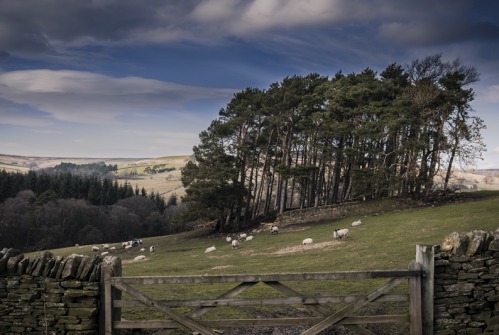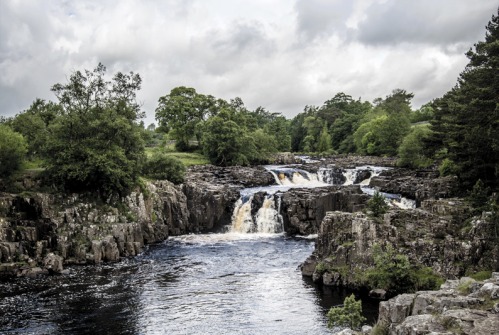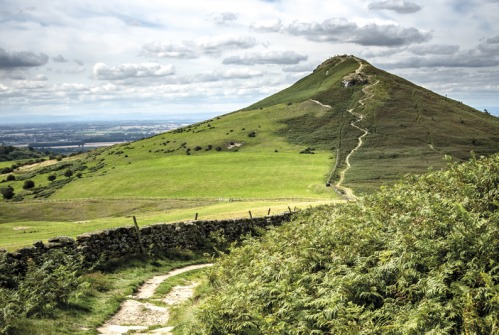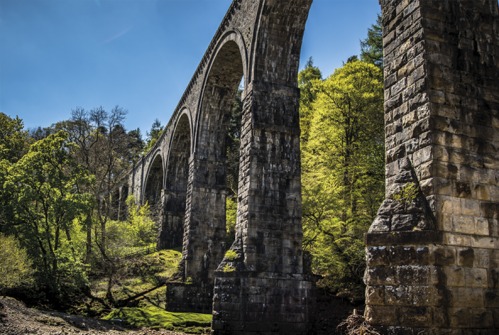Walk This Way: Durham Heritage Coast and Beacon Hill
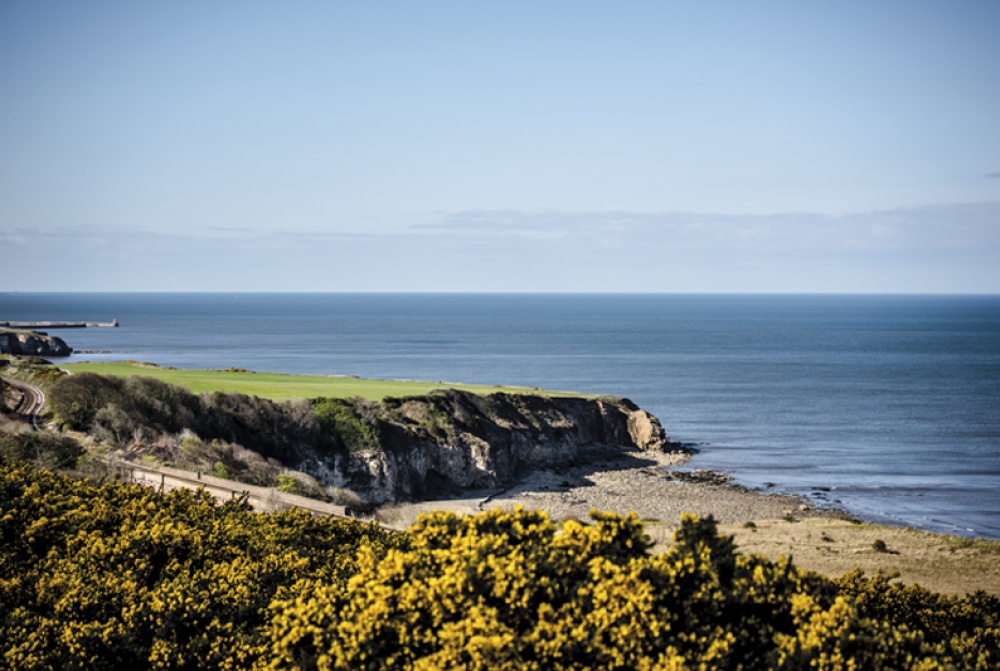
This dramatic walk takes in a beautiful section of the Durham Heritage Coastline, which runs from Seaham to Crimdon and is part of the England Coast Path National Trail
Parking: Nose’s Point Car Park, just off the A182 at Dawdon, Seaham. OS map grid ref: NZ435483
Starting Point: Nose’s Point
Finish: Nose’s Point
Distance: Approx 4 miles
Time: 2 hours (including time for diversions down to the beach and pauses to admire the views)
Difficulty: Moderate sections, but mostly easy. There are some steep stepped sections both up and down but all are relatively short.
Footwear: The route is mostly excellent walking with gravelled sections and easily followed trails. Some sections through the woods could be muddy in wet conditions but robust training shoes or light walking boots should certainly be adequate for this route.
OS Map: Explorer 308
Other: There are stiles and gates along this route and it crosses the railway lines in several places. It is very popular with dog walkers.
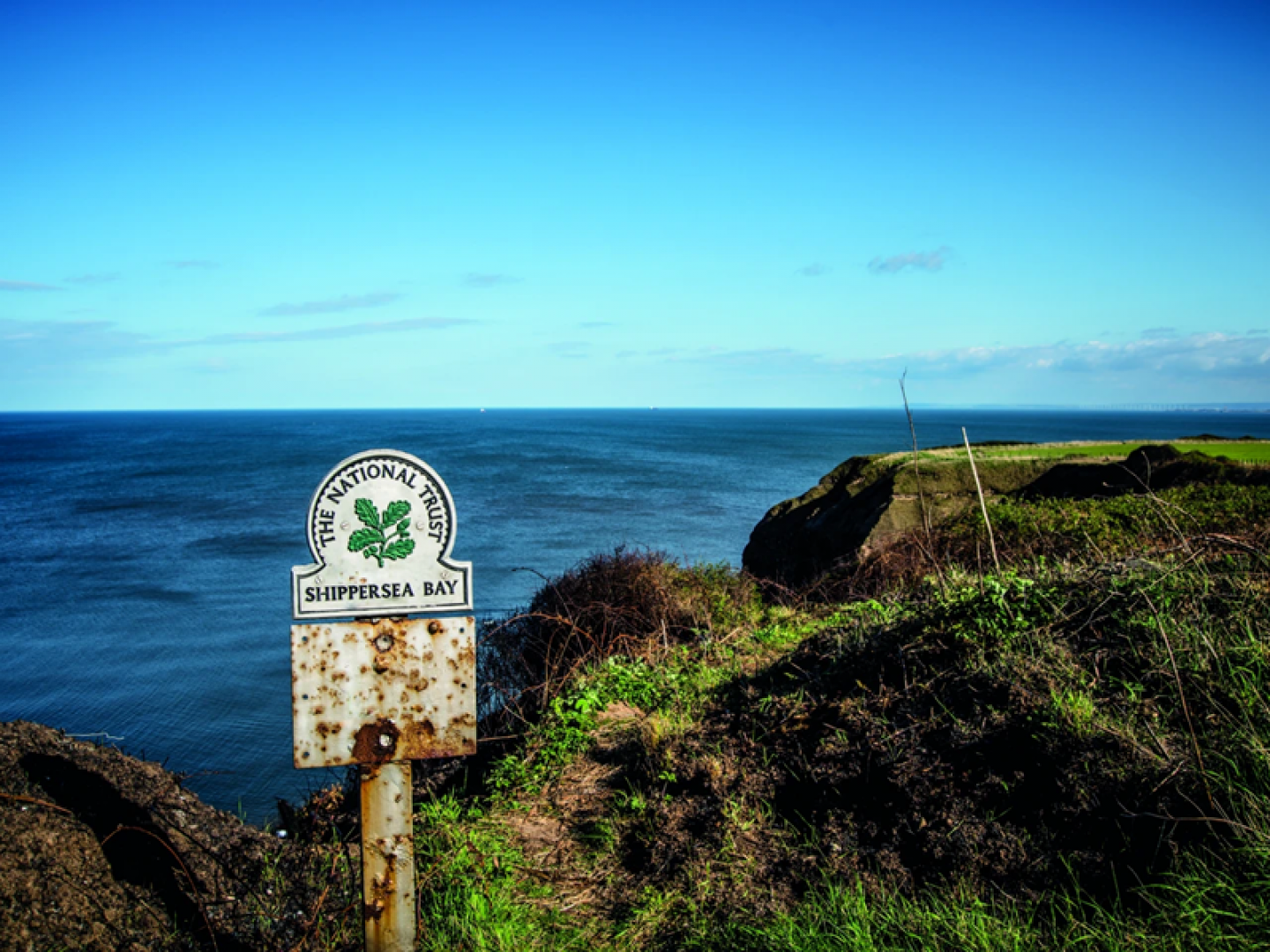
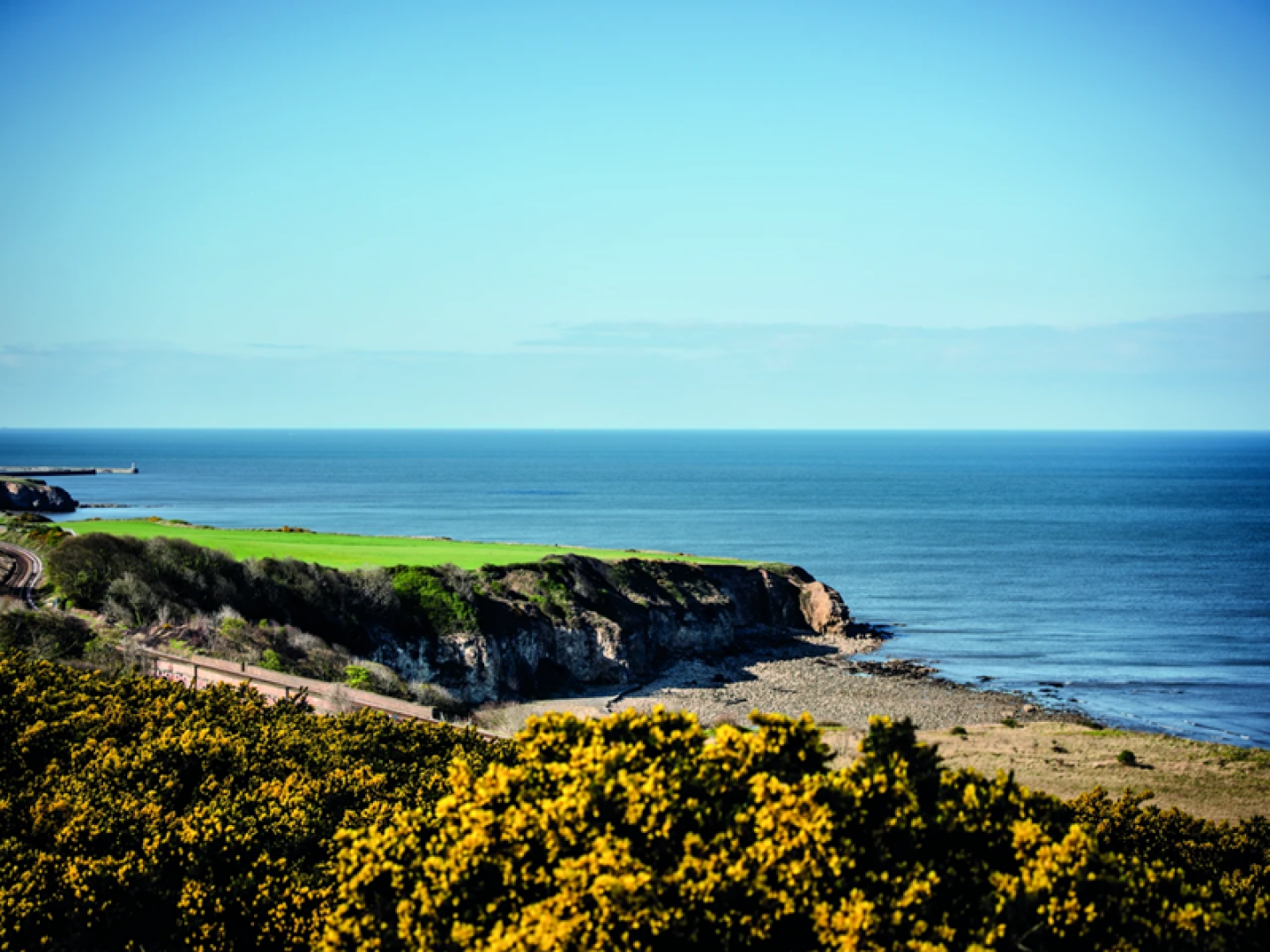
The remnants of the industrial heritage of the area can still be spotted and along the base of the cliffs we can see traces of the millions of tonnes of colliery spoil that were dumped onto the beach. Having said that the regeneration of this stretch of coastline has been remarkable, at one point 150 years of coal waste buried entire beaches under nine metres of coal waste. Looking now this seems unimaginable. The work of the community regeneration projects along the coast and the tireless action of the sea itself have helped to open up an area of extraordinary geological and botanical interest for all to explore. The unusual yellow magnesium limestone of this stretch of coastline boasts a dazzling array of wildflowers and insects as well as very rare coastal grasslands, many of which are unique within Europe. The entire area provides a diverse habitat where flora and fauna, not to mention mammals, thrive. The calcareous grassland area supports several species of orchid as well as the vivid purple meadow cranesbill flowers.
The town of Seaham itself, that sits close to the start of our walk, is definitely worth a visit too. It is home not only to one of the oldest surviving churches in the UK, St Mary the Virgin, which is believed to date from the 7th century, but also Seaham Hall, the place where Lord Byron finally married Anne Isabella Milbanke in 1815 after an infamously tumultuous courtship that ran from 1812, when she had refused his first proposal of marriage. As if that weren’t enough Seaham is also home to Lickety Split, the multi-award winning 1950s ice cream parlour and the first dedicated dessert parlour in the North. The perfect spot to reward yourself after this cliff walk and the perfect way to ‘persuade’ any children in your party to keep going!
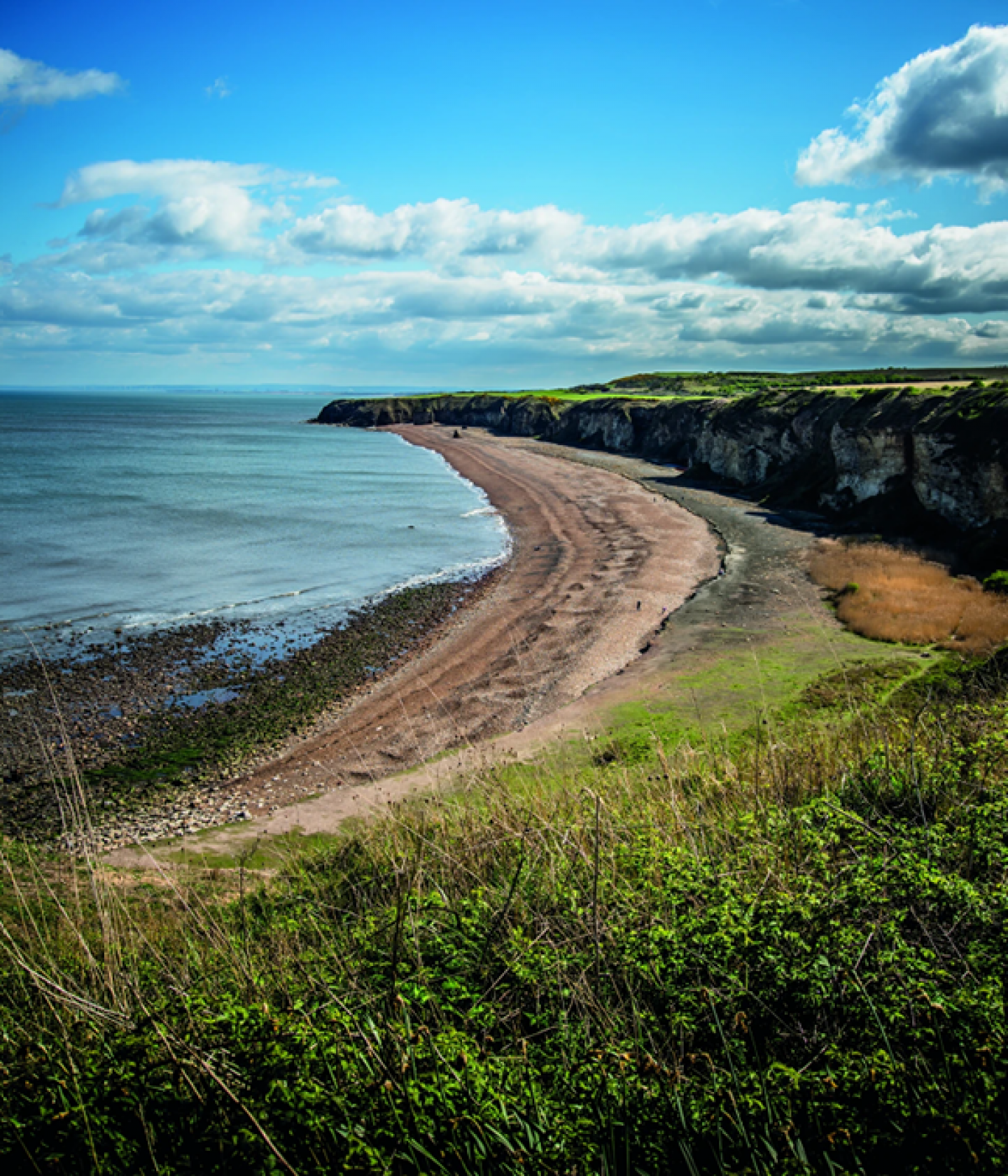
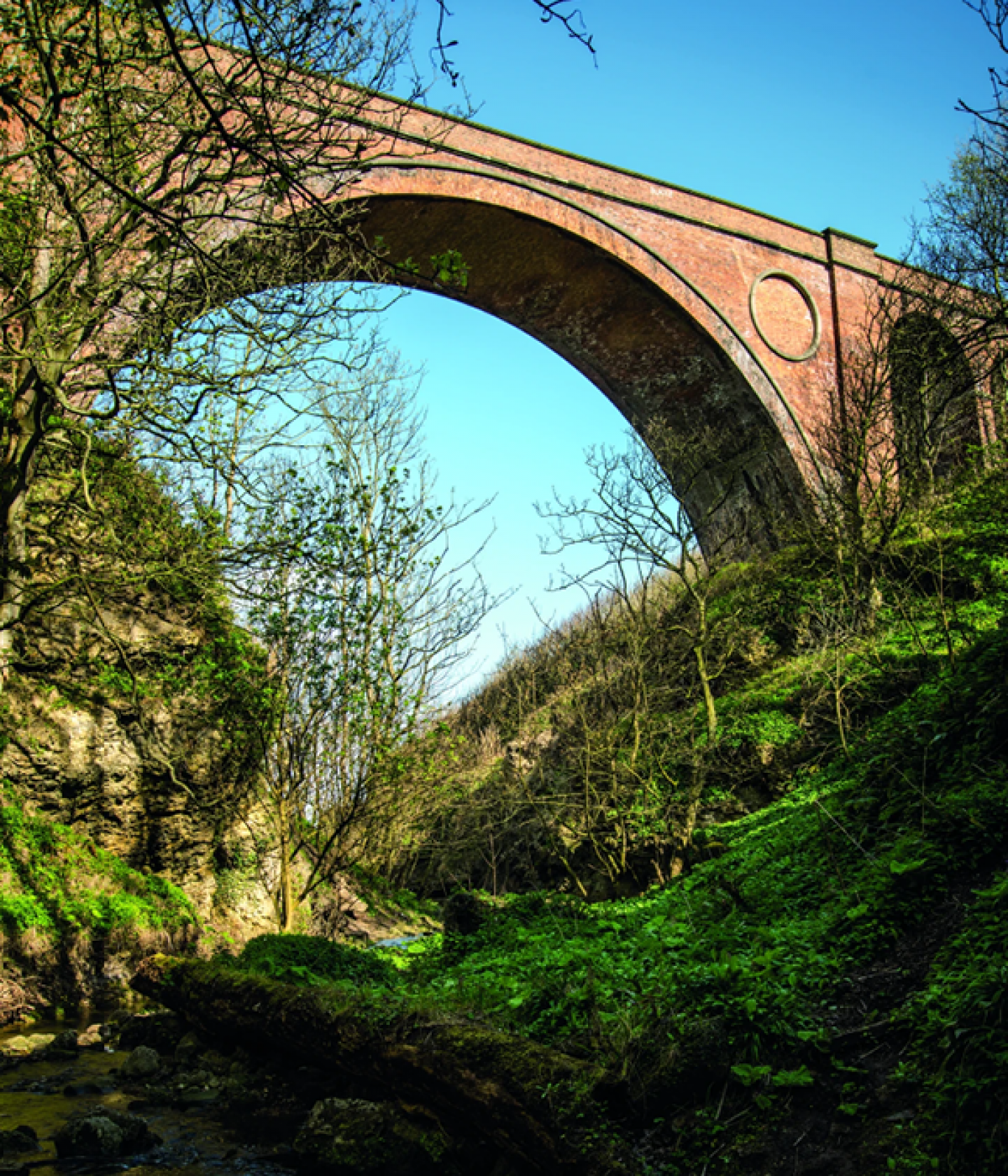
The Route
From the car park, head south along the tarmacked path that leads to the northern end of Blast Beach. From here there is a fine view along the beach (1) and on to Hartlepool in the distance. Follow the cliff path onto the National Trust land around the beach. The path follows the line of the cliffs and away to the right the route of the coastal railway line can be seen. As you cross the open meadow it is noticeable how the traffic sounds of Seaham and the coastal road network are soon replaced by the birdsong of skylarks high above and the rustling of the sea breeze through the clifftop grass and broom.
At the end of the meadow catch the first glimpse of the beach at Hawthorn Hive. From here enter a small area of cliff-top woodland following the path along the line of the railway with intermittent views of the sea. As this woodland opens out there are some very steep steps away to the left that lead down to Hawthorn Hive. However the path turns right and you cross the railway line into Hawthorn Meadows and Woodland. Staying on the path that leads left, drop down into the first of the coastal denes, a beautiful river gorge that takes you past the elegant arch of Hawthorn Railway Bridge. At the base of the dene cross the Hawthorn Burn (2) and head up the steep steps parallel to the bridge. If you wish to explore Hawthorn Hive Beach turn left under the railway arch at the top of these steps or to continue on our path turn right and follow the path up and around to the left, passing under the end of the railway bridge, re-joining the coastal path.
Soon you can see the small cove of Shippersea Bay. Continue on the footpath bounded by the railway line through the green gates until you reach the National Trust sign (3). At this point turn directly right, over the railway line and up the steep steps onto Beacon Hill. Follow the line of broom and gorse around the top of the hill to the gate and turn right into the field. The line of the path from here follows the left edge of the field but it is worth the small detour diagonally across the field towards the sea to reach the trig point and the 360 degree views of the surrounding area.
From here you can see south past Easington Colliery to Hartlepool and the gentle curve of the North Yorkshire coast snaking away into the distance. Looking north along the coast is Hawthorn Hive and beyond it Seaham Harbour (4). Return to the footpath along the top edge of the field and drop down through the gate back into the woodland above Hawthorn Burn. Follow the path down to the right and take the steps back down to retrace our footsteps over the bridge that crosses the burn. Climb the steps back to the top of the woodland and re-cross the railway line, returning to the coastal side.
Follow the path out of the small woodland and back across the vast meadow keeping the railway line to your left. At the end of the meadow rather than re-crossing the small bridge turn directly right down the rough steps onto Blast Beach. Turn left and follow the curve of the bay northwards leaving the beach (5) itself by the steep track at its northern end. This brings us back to the tarmacked path and the car park.




